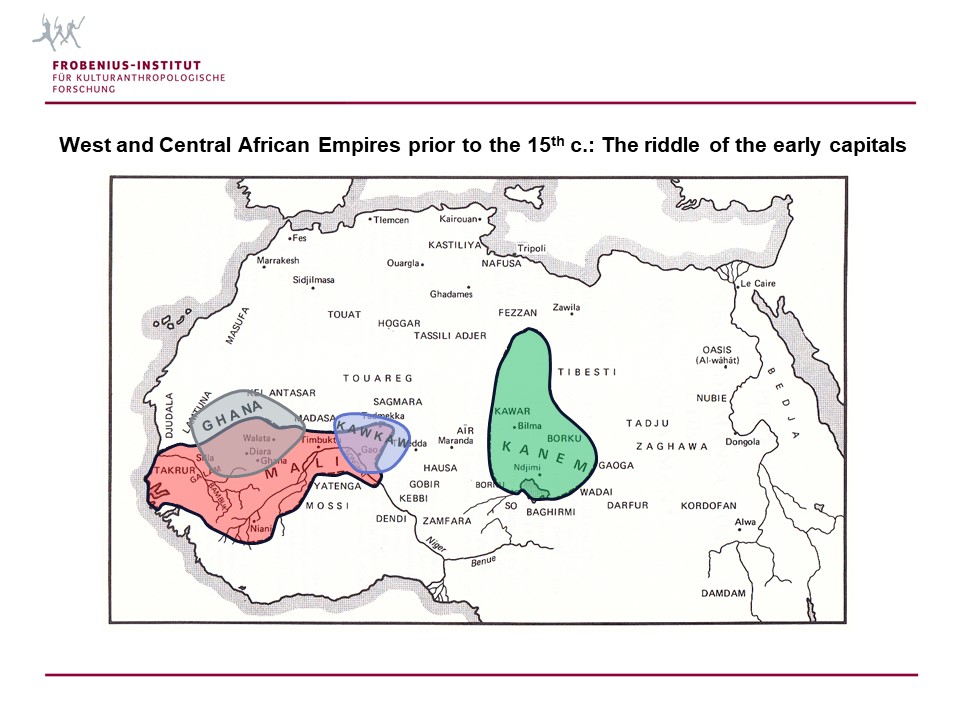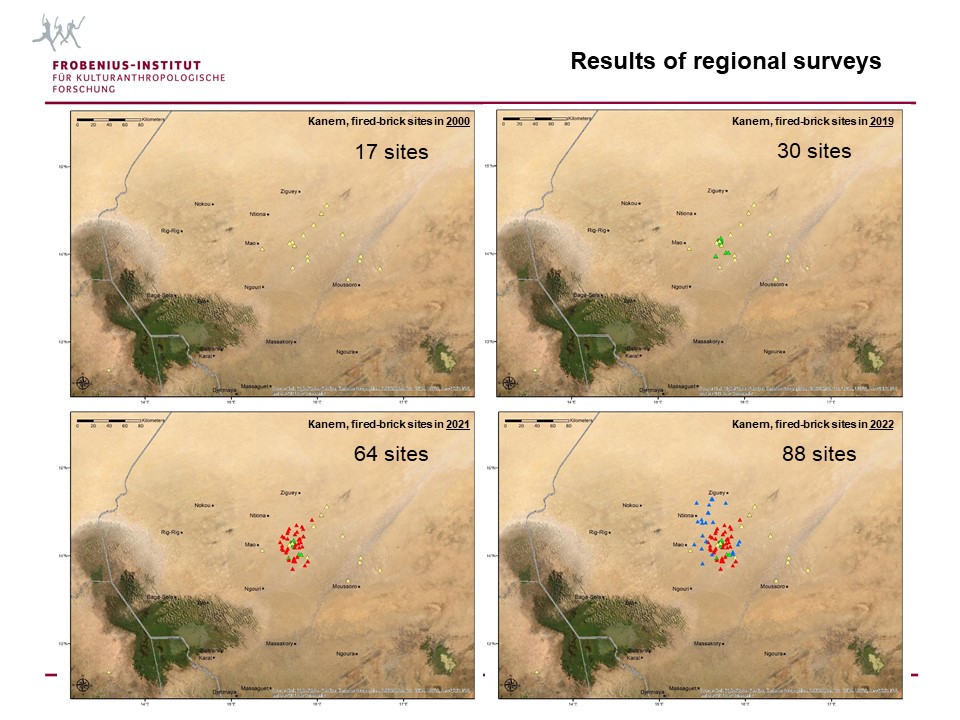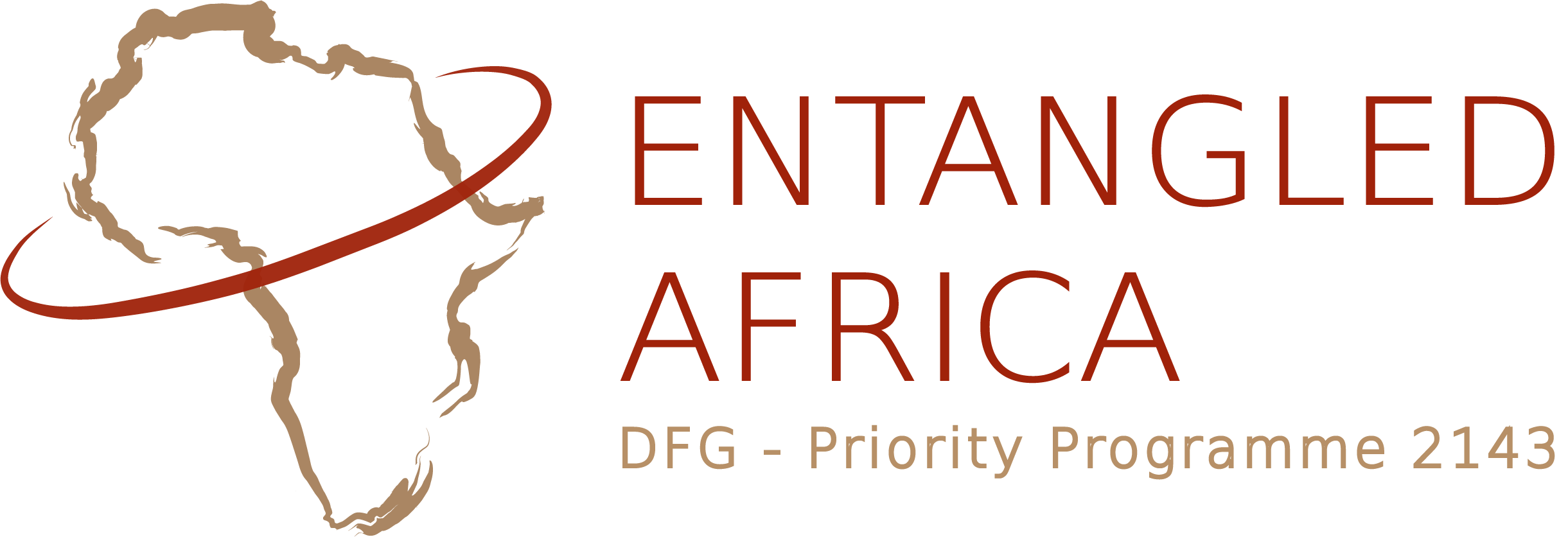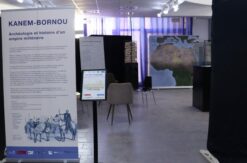Attribution & Copyright EHESS
The Lake Chad Region as a Crossroads - Lecture at the Ècole de Hautes Études en Sciences Sociales (EHESS, Paris)
At the invitation of Agnes Charpentier, Chloé Capel, Élise Voguet and Ingrid Michienzi from the Institut d’études de l’Islam et des sociétés du mondes musulman, Carlos Magnavita gave a lecture on April 15, 2022 in Paris on recent results of the SPP project in the context of the workshop Mondes Sahariens : sources, espaces, sociétés, VIIIe-XIXe siècle. Entitled Tié: Kanem-Borno’s first Islamic capital Njimi?, the presentation focused on the question whether one of the most important sites currently investigated by the project, in Kanem (Chad), can be equated with the lost late medieval capital Njimi.
After an introduction of the goals and scope of the project and the SPP as a whole, the general problem of the still unidentified former capitals of the great West and Central African empires of Ghana (5th-11th c.), Mali (12th-15th c.), and Kanem-Borno (8th-19th c.) was discussed. This unresolved general question provided the context to direct the discussion to two aspects of previous historical research: first, the geographical location of the two early Kanem-Borno capitals mentioned in medieval Arabic writings, Manan (ca. 10th c.) and Njimi (ca. 12th c.), which were situated in the Kanem region; second, the preceding search for the second of these two localities in the 19th and 20th centuries. A central question in this context related to whether the fired-brick site of Tié in central Kanem, which has been known since the 1960s, can be identified with Njimi, the first Islamic capital of Kanem-Borno.


Most of the lecture dealt with the presentation of the latest archaeological data obtained by means of regional prospections and excavations carried out by the project since 2019. Primary subjects tackled were the increasing number of known fired-brick sites in central Kanem (17 in 2000 vs. 88 in 2022), the results of radiometric dating carried out so far, the central location and unique size of Tié in relation to other sites in the region, as well as the results of previous excavations at this site. The latter included the presentation of the partially excavated central building of Tié. This construction consists of a two-story and comparatively large rectangular brick structure (ca. 17 x 23 m), the interior walls of which are covered with fine white lime plaster. West of the Nile, buildings with fine white interior plastering antedating the 15th century are only known from Gao, the capital of the Kawkaw Empire in Mali. It was particularly noted in this respect that Tié is hereby on a par with the royal seat of one of the great kingdoms of West and Central Africa. Since previous dating indicates that Tié was settled during the period in which Njimi is also known to have been used (12th-14th centuries), it was concluded that Tié equals the ruins of the late medieval capital of Kanem-Bornos.
With its 3.2 hectares, however, Tié/Njimi was anything but a city. In all probability, it was nevertheless the most important political center of the empire and headquarters of the sultanate. Indeed, the regional prospections that have been taking place since 2019 show the inexistence of sites with urban dimensions in Kanem. To date, a development towards Kanem-Borno urbanity is only evident for the period postdating the 15th century. The conclusion of the presentation was again related to the problem of the hitherto unknown early capitals of other major states from West and Central Africa. The new research results from Kanem make it clear that even smaller royal settlements without recognizable urban character or scale may have been important political centers of early states. Because sites such as Tié do not conform to the Arab and Western conception of a capital city, they have been probably widely overlooked by researchers over the last decades. Presumably, this is the main reason why the early capitals of the largest pre-colonial state societies from West and Central Africa remain thus far undiscovered.




